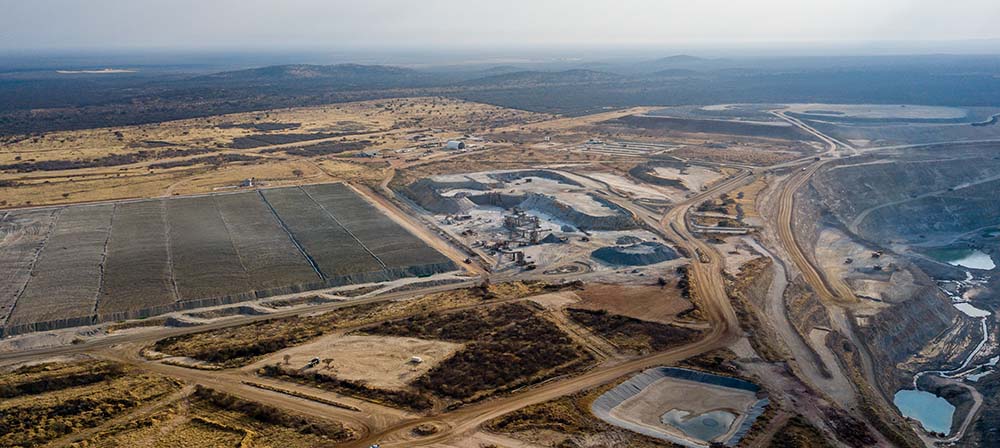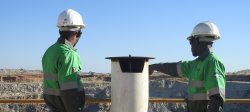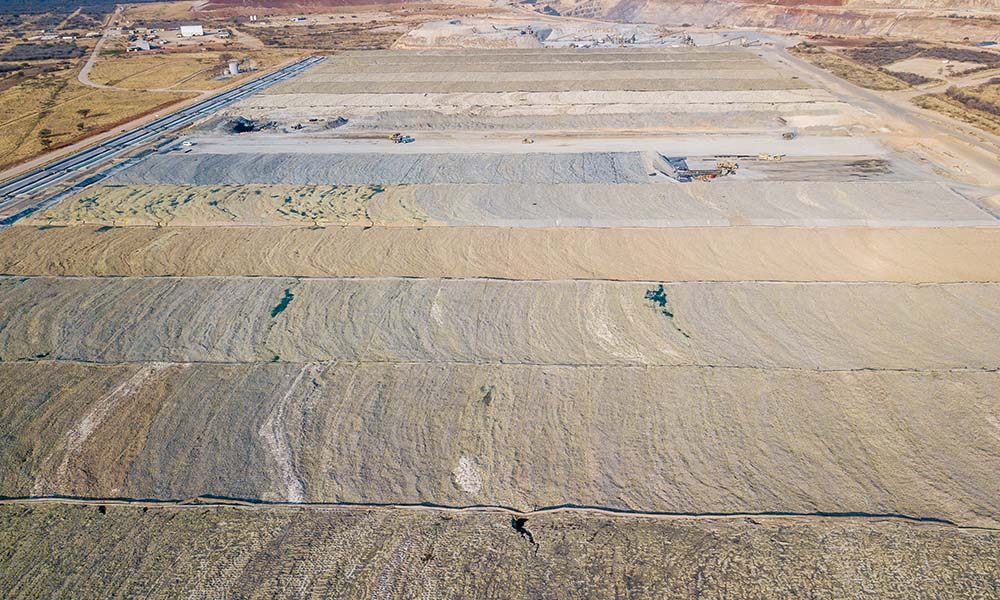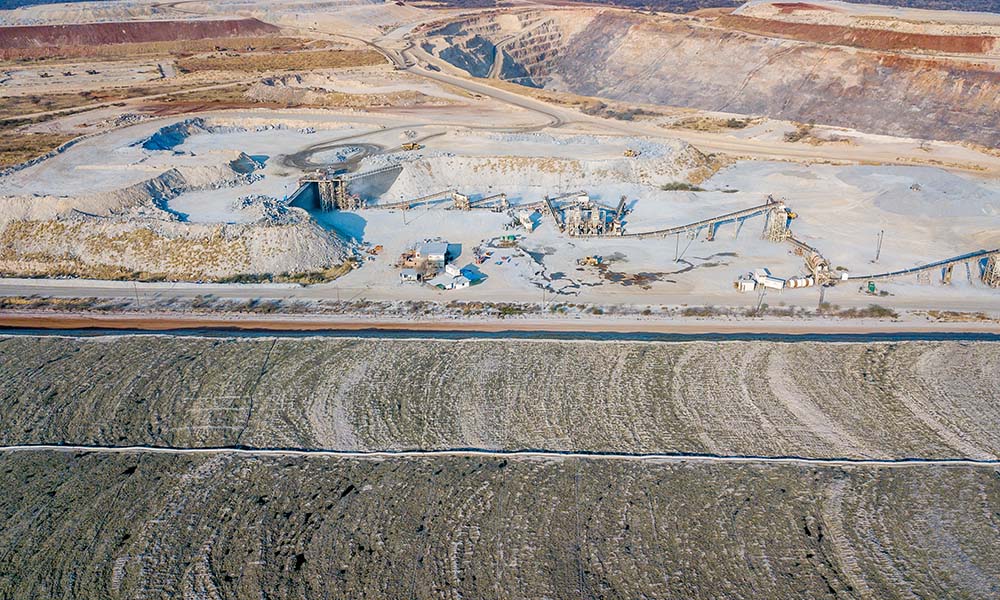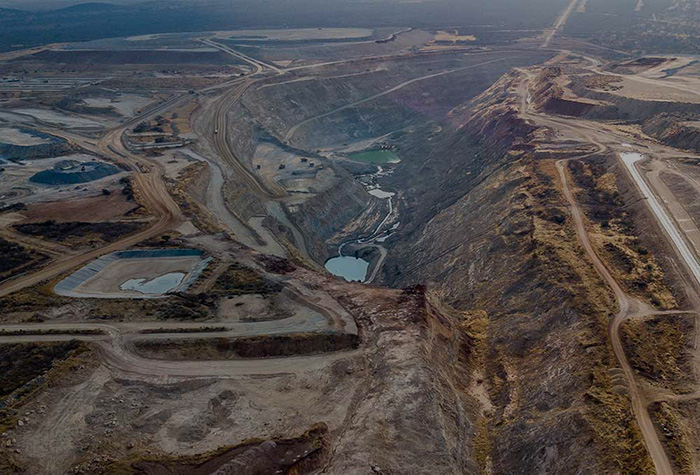Tschudi Copper Mine

State of the Art Heap Leach Mine
Tschudi is a modern open pit mine with state of the art heap leach processing infrastructure. The mine was constructed in 2015 and produced over 80kt LME Grade A copper cathode up until 2020, when it was placed on care and maintenance.
Located in northern Namibia near Tsumeb, the Tschudi copper mine benefits from existing infrastructure, access to water, and a skilled local workforce ready to execute CCC’s long term mine plan and sustainability initiatives.
Overview
After overseeing a safe and successful period of Care and Maintenance at Tschudi since 2020, CCC was established by the current management team to develop, finance and execute a sustainable long term restart plan for the mine.
Under CCC ownership, exploration and metallurgical testwork is targeting an increase in Tschudi’s life of mine reserves from less than three years at acquisition to over ten. First production is targeted in 2024 after CCC identified potential to recover four times as much copper from existing stockpiles than prior estimates. A cut back of the existing open pit is required to enable name plate processing capacity of 17ktpa to be reached, and the mine’s longer term exploration potential remains to be evaluated through deeper exploration.
A center piece of CCC’s restart plan is the Tschudi community irrigation project, which is planned to feed consistent, clean fresh spring water to local agricultural users. The irrigation project is being developed in conjunction with electrification of Tschudi’s water management network being undertaken by CCC to replace a previous diesel powered network.
Tschudi benefits from a direct grid connection, which CCC plans to complement through installation of an on site 12MW-25MW solar power plant. The solar plant is scheduled to supply one third of Tschudi’s life of mine power requirements.
The CCC team is committed to evaluating further community and sustainability initiatives to complement the mine’s restart, as well as maintaining its strong safety and local employment history. Through targeted investment and proactive risk management, the Company has a clear vision of Tschudi’s potential to develop into one of the continents great copper mines analogous to those found in the Central Africa Belt.
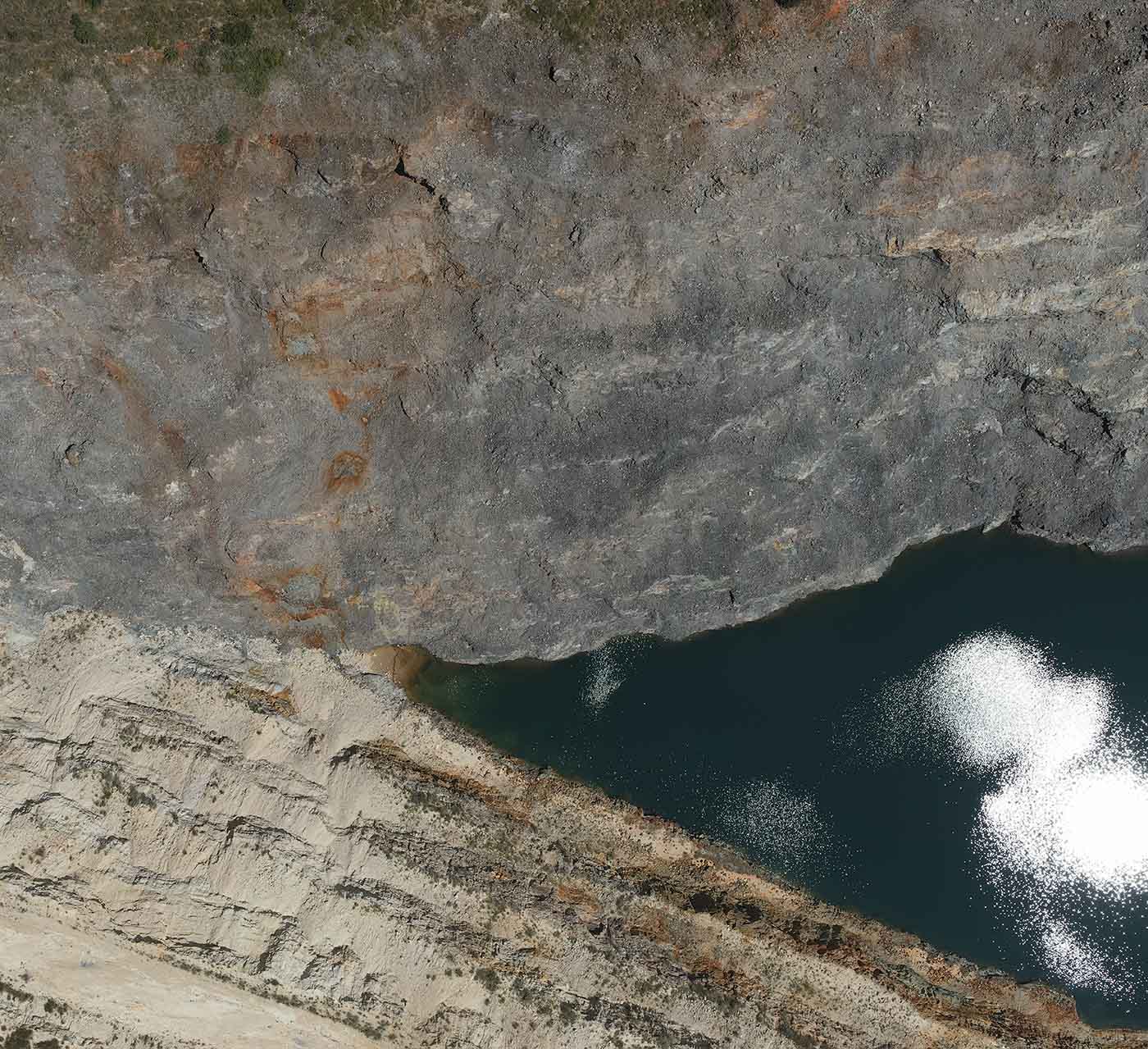
Operational Highlights
- Fully licensed, with excellent local employment and safety record maintained under CCC’s stewardship
- Mine life target of ten years following exploration and metallurgical studies undertaken by CCC. Mine life was previously less than three years at CCC’s point of inception
- Sustainability at forefront of restart with CCC planning to install an on site solar power plant, electrifying key infrastructure, and connect local agricultural groups with reliable, clean water supply
- Production targeted in 2024 with CCC identifying four-fold increase in recoverable copper from existing stockpiles to support operations during planned cut back of open pit
- Pit expansion to enable further evaluation of Tschudi’s potential, with deposit remaining open at depth, along strike and relatively underexplored compared to analogous counterparts from the copper belt of Central Africa

Location of Tschudi, A Northern Namibian Mine
The Tschudi copper mine is located in northern Namibia, 20km west of the township of Tsumeb, along the Kaoko copper belt. Tsumeb is a copper provence with a history of mining spanning more than a century. The town hosts an operating copper smelter originally built in the 1960’s to process ores from the prolific Tsumeb deposit which was mined from surface in 1893 to depths of 1650m prior to its closure in 1996 . Copper production over 90 years from the Tsumeb mine was estimated to be 6Mt . For context, if such a reserve was delineated today, it would stand alongside the current reserves of Zambia’s Kansanshi and Sentinel mines – which rank amongst the largest copper mines in Africa by capacity .
The prolific Central Africa Belt hosting these copper mines is considered analogous and possibly an extension of the Koako copper belt in which Tschudi and Tsumeb reside. Whereas the Central Africa Belt presently accounts for seven per cent of the world’s mined copper, production from the Kaoko belt is currently dormant following the closure of Tsumeb after 90 years of mining, and Tschudi’s transition to Care and Maintenance in 2020 after only five years of production.
Timeline
2013 – 2020: Site History
Tschudi Copper Mine: Origins
Construction of the Tsumeb smelter during the 1960’s provided impetus for regional exploration to accelerate in an effort to diversify the plant’s sources of ore feed. Tschudi was first subject to exploration drilling in the 1970’s. Development initially took place as a small underground operation from 1980, but remained limited by capacity and financial constraints of the Tsumeb smelter which was subject to common ownership.
Divestment of the Tsumeb smelter in 2010 by Tschudi’s former parent company – Weatherly International Plc – provided a catalyst for development of the modern Tschudi open pit, processing and supporting infrastructure. The Weatherly mine plan targeted shallow oxide ores with processing via on site heap leach.
At a capital cost exceeding US$80million, construction of the modern Tschudi mine took place between 2013-14 providing state of the art infrastructure, including:
- Power line, substations, and power supply;
- Borefield and pipelines for water supply;
- Access roads from Highway;
- Security Fencing and Gates;
- Workshops and Offices for the mine and plant;
- Heap Leach Pads and Waste Storage Facilities;
- Solvent Extraction/Electro Winning (SX/EW) plant
The processing facilities developed at Tschudi allowed production of pure refined copper on site for the first time on a commercial scale in Namibia. Production of LME Grade A copper cathode commenced in 2015 and continued at a rate of around 15ktpa until 2020. Whilst in operation, Tschudi provided its host community with abundant employment opportunities, such that 98 percent of its 850 person workforce were Namibian citizens. The mine also commanded an excellent safety record, achieving over 1110 days and 6million hours worked free of LTA incidents.
Its historical financial performance under Weatherly’s management was impacted by lower than expected metallurgical recoveries throughout the life of mine, and a flooding event during 2018 which culminated in its former parent company being placed into administration.
Members of the CCC team were subsequently appointed by Tschudi’s administrators to responsibly manage the mine, overseeing its Care and Maintenance from 2020 whilst developing a sustainable long term restart plan.
Proactively Mitigating Historical Risk Factors
A foundation of CCC’s restart planning for Tschudi was to comprehensively study and understand risk factors that impacted its historical financial performance, and develop bankable mitigation strategies to support future production.
Initial due diligence undertaken by the CCC team at its inception did not identify any ‘red flags’ that could impede development of a sustainable long life restart at Tschudi. Several risk factors requiring mitigation were identified and the major ones included water management and metallurgy.
Lower than forecast metallurgical recoveries remained an issue throughout Weatherly’s mining campaign at Tschudi. Compared to a forecast of 85% in Weatherly’s original 2012 Feasibility Study, CCC estimates that actual recoveries were in the order of 63%. This was due to inadequate distinction and separation of ore types during the mining phase.
CCC has addressed this risk within its mine plan and processing strategy. Ore of different mineral types will be mined selectively and stockpiled separately on the Run-of-Mine (ROM) pad to ensure the processing circuit is fed appropriate ore types.
To further improve the processing recovery, CCC has undertaken extensive metallurgical test work focused on optimising recoveries from the existing heap leach plant and potential expansions of the plant to accommodate additional ore types. CCC’s restart strategy is thus initially focused on better utilising Tschudi’s existing state of the art heap leach facilities whilst accommodating future upgrades to support long term production from its deeper sulphide ores.
As the mine deepened during the Weatherly era, water management became an unexpected issue, which, in conjunction with the aforementioned recovery shortfalls, drove Weatherly’s final descent into administration.
In May 2018, scheduled blasting within the pit fractured a fault, creating an inrush of water from a previously unknown aquifer which flooded the pit and interrupted production. Subsequent upgrades to the dewatering infrastructure were reactive and capacity constrained by the mine’s power supply. Whilst water levels eventually became low and manageable after constant pumping, costs were high due to forced reliance on temporary diesel infrastructure and a lack of opportunity to understand the local hydrology.
To address this risk CCC has committed to invest in a state of the art water management network surrounding the mine which will also deliver fresh, clean water to the local community for agricultural use. CCC has undertaken hydrological studies of the local area and engaged independent engineers to design a new, modular, mobile, fit for purpose solution that will be connected to the electricity grid as opposed to the historical diesel powered network.
The modular design enables capacity to be switched on/off and the infrastructure to be relocated as needed. Performance of the network is expected to be significantly enhanced by its extension to local community agricultural groups. During the Weatherly era, discharge points for water removed from the pit were sub optimal as water was being recycled back into the same aquifer impacting the pit. By undertaking additional investment in the mine’s water distribution infrastructure, CCC aims to deliver a scarce natural resource to the local community, pacify a major historical risk factor, whilst enhancing the mine’s operating cost profile as it develops Tschudi’s long term restart plan.
2022 – 2023: Mine Acquisition, Exploration and Development
Restart Planning Process
After overseeing a safe and successful period of Care and Maintenance at Tschudi since 2020, CCC was established by the current team to develop, finance and execute a sustainable long term restart plan for the mine.
CCC’s restart planning has focused on exploration and metallurgy to understand the scale of the deposit at Tschudi and optimal methods for processing its ores. At CCC’s point of inception, Tschudi’s existing reserves were only sufficient to support a mine life of under three years. This was due to the size of the existing mineral resource estimate as well as significant levels of unrecovered copper remaining in the ores.
The pre-existing resource estimate at Tschudi was largely based on 26km drilling undertaken in 2006-07 by its previous owner. During 2023, CCC undertook the mine’s first exploration drilling program in 15 years. This ‘phase 1’, 20km program confirmed extensions of the orebody along strike and at depth, more than doubling the mineral resource estimate at Tschudi. With the deposit remaining open along strike and depth, there remains considerable further scope to grow the Tschudi resource. By comparison, reserves at Zambia’s Kansanshi and Sentinel mines – which rank amongst the largest copper mines in Africa by capacity – are each supported by over 1000km drilling.
In parallel to demonstrating the deposit’s scale – CCC has also undertaken extensive metallurgical test work programs to identify the optimal processing method for Tschudi. These studies have confirmed that existing processing infrastructure remains in excellent condition and capable of processing the majority of ores identified to date at Tschudi.
Together, these initiatives are targeting an extension of Tschudi’s mine life from under three years at CCC’s inception to over ten years, supporting a sustainable, long life restart of the operation whilst its potential to transform into a ‘tier 1’ asset analogous to copper deposits of central Africa is evaluated.
2023 – Present: Mine Scheduled for Restart
Key Operational and Processing Facilities in Place
Supported by over $80million invested at Tschudi to date establishing the existing pit and heap leach processing facilities, CCC is targeting a restart of the mine in 2024. The Tschudi community irrigation project is a center piece of the Company’s restart plans. Surplus water from the existing pit is scheduled to start flowing to community agricultural groups, with inflows from the local Tschudi aquifer to be recycled as a source of regular supply.
During initial phases of the irrigation project, production is planned to be sourced from existing stockpiles. Dewatering of the pit is required to commence a staged cut back to facilitate access to extensions of the orebody delineated in recent drilling. This will enable production to scale up toward name plate capacity as run of mine ore is fed through the processing plant.
Access to the pit following its dewatering will also enable CCC to undertake exploration drilling focused on depth extensions of the resource. Many analogous deposits from the Central African Belt host “feeder pipes” of high grade mineralisation below disseminated near surface material such as that encountered so far at Tschudi. To date, the quantum of exploration drilling at Tschudi remains a fraction of that typically undertaken at its Central African Belt counterparts. With longevity of the neighbouring Tsumeb deposit offering inspiration, the CCC team is committed to assessing its full potential.
Project Gallery

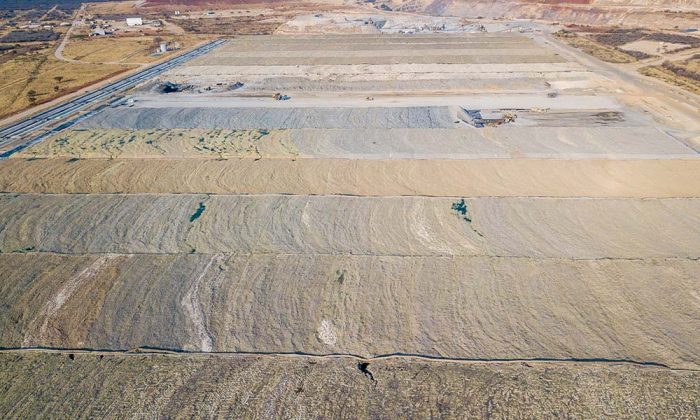

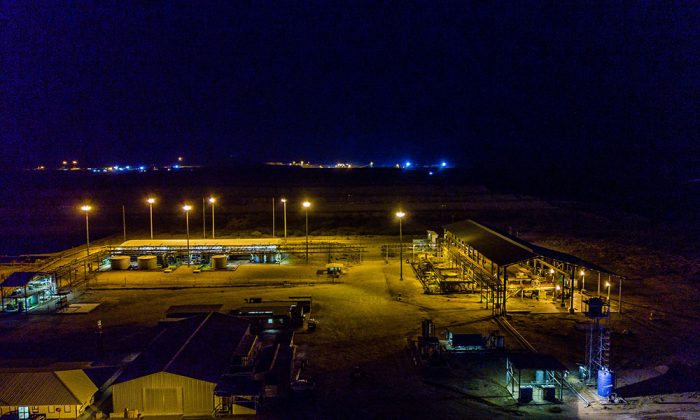
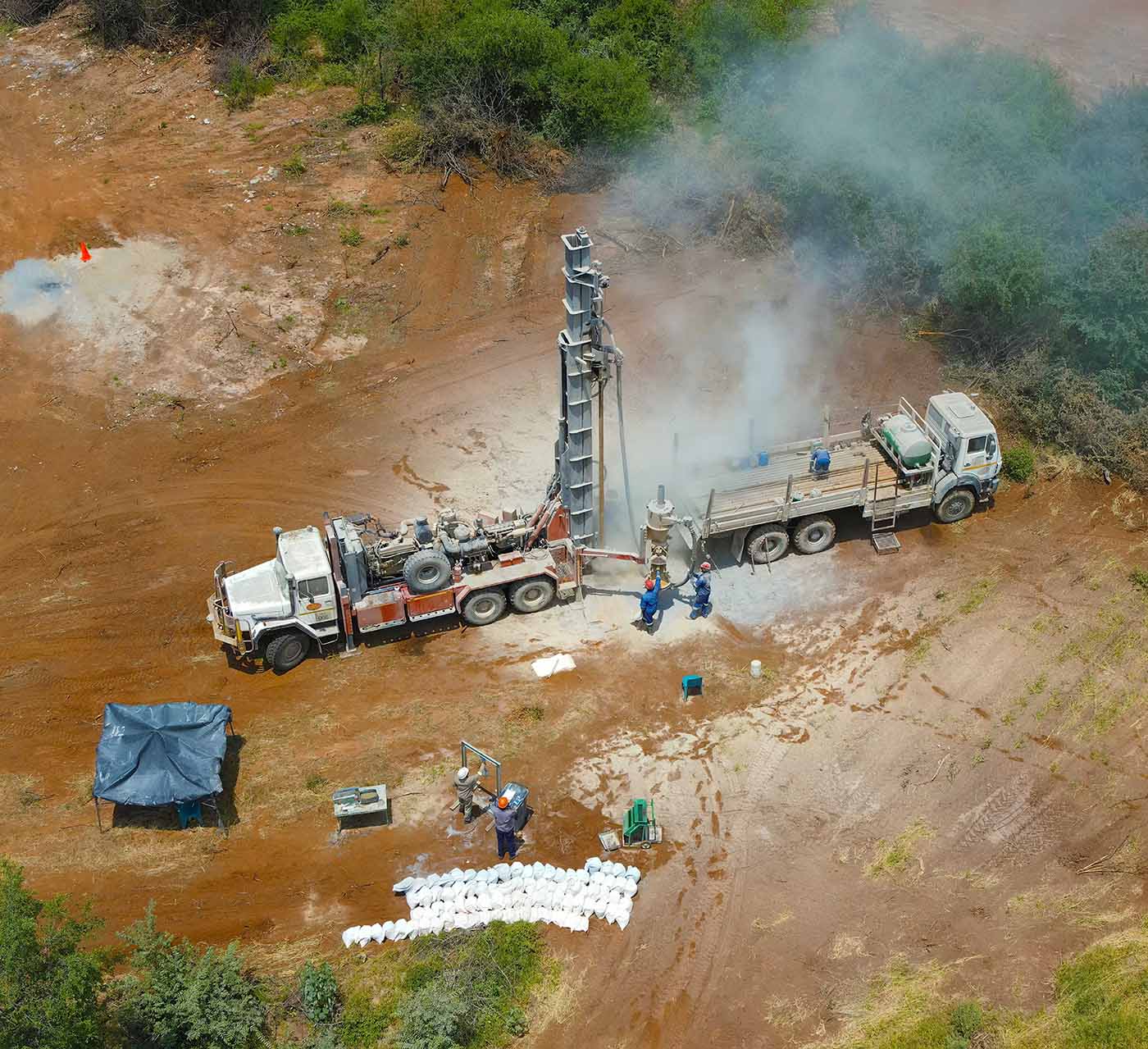
Next Steps at Tschudi
- Restart heap leach processing from existing stockpiles
- Electrify water management network and commission community irrigation project
- Commence cut back of open pit to access orebody extensions identified through recent drilling
- Install renewable power supply with onsite solar plant
CCC recognises the potential for Tschudi to evolve into a copper mine analogous to some of the great deposits of the Central Africa Belt. The Company’s restart plan is therefore focused on preparing the mine as a long term, sustainable operation.
At the forefront of its restart stands the Tschudi community irrigation project, an initiative designed to make available consistent fresh, clean water for local agricultural groups. Water management infrastructure supporting this project and the mine’s dewatering needs is planned to be electrified. Previously Tschudi relied on a diesel powered dewatering system.
Tschudi benefits from a direct connection to the Namibian electric grid. Whilst 95% of Namibia’s total domestic power generation capacity comes from renewable sources, the country is reliant on imported electricity from South Africa to meet demand. CCC is focused on demonstrating Namibia’s renewable energy potential via the installation of a 12-25MW on site solar plant at the mine. The solar plant is designed to supply up to a third of Tschudi’s power requirements over its life of mine.
Renewables are expected to support an increasing proportion of the Namibian grid over time. The country is one of the world’s sunniest and its solar generation potential has been recognised as part of the “Mega Solar” project. Sponsored by the US Government, World Bank, African Development Bank, and African Union Development Agency – Mega Solar is a 5GW solar power generation project spanning Namibia and neighbouring Botswana. Mega Solar stands to become one of the world’s largest solar projects when fully executed – providing a strong signal of the future sustainability opportunities for domestic power users in Namibia. The CCC team is committed to maximising Tschudi’s sustainability profile and intends to investigate additional Scope 1 and Scope 2 emission reduction opportunities as they become available.

